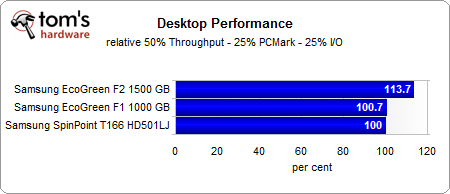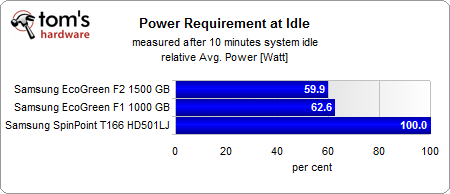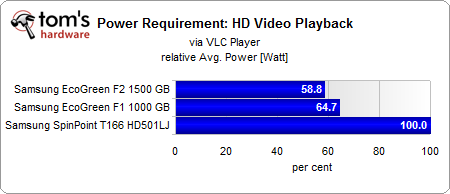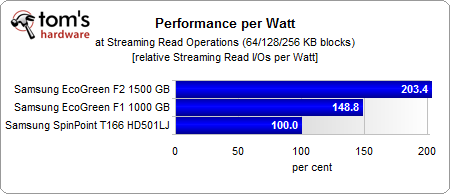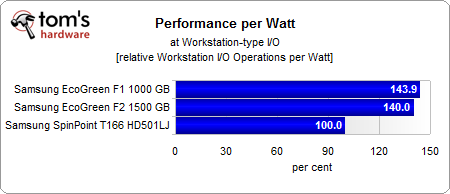Hard Drives, Yesterday And Today: From 500 GB To 1.5 TB
Normalized Results: Performance, Power And Efficiency
On this page, all performance charts are normalized to the level of the Spinpoint T166 (= 100%), which is the two year old drive. This allows us to get a quick overview on the individual improvements of the two EcoGreen 5,400 RPM drives, compared to the 7,200 RPM model.
Normalized Performance Results
We created a little performance index for the three drives, weighting throughput performance at 50%, PCMark Vantage performance at 25% and I/O and access time performance at 25%.
Clearly, the first EcoGreen drive at 5,400 RPM manages to at least maintain the overall performance results of the older Spinpoint T166. The F2 EcoGreen introduces more performance, which results in a better desktop performance result.
Normalized Power Requirement Results
This chart repeats the drive power requirement at idle after 10 minutes of inactivity, but presents the results normalized to the level of the Spinpoint T166 (100%). The 5,400 RPM EcoGreen models only require roughly 60% of the power.
The results are similar for streaming at maximum data rates.
Obviously, the Spinpoint F2 EcoGreen is more efficient with limited streams of data, as it did better than the other drives.
Normalized Efficiency Results (Performance per Watt)
Get Tom's Hardware's best news and in-depth reviews, straight to your inbox.
A 100% increase in power efficiency for the latest low power hard drive generation is quite a nice result.
Since performance didn’t increase for workstation-like I/O operations, efficiency could only increase due to the drastically reduced power requirements. The T166 drive is faster in this benchmark, but the two EcoGreens are much more efficient at work.
Current page: Normalized Results: Performance, Power And Efficiency
Prev Page Efficiency And Surface Temperature Next Page Conclusion